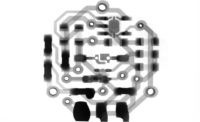In my personal experience, there are two approaches building automation contractors often take when it comes to assigning resources to projects, and the choice between them is often driven by the size of the staff and the volume of the projects.
The first approach, which is more typical of smaller teams, is a system where a single person handles virtually all aspects of a project once the contract has been booked. While this is typically excellent from a standpoint of detail-oriented project delivery, some of downsides of the approach deal with efficiency, scheduling challenges, and a very real possibility that things like project documentation get put on the backburner.
The second approach, which is more typical of medium to large contractors, is one where aspects of each project are divided up into teams, and some project aspects are driven in parallel.
For example, an engineering team will be assigned to handle site surveys, shop drawings, and parts ordering for all projects. Meanwhile, a programming team will be assigned to handle controller configuration, networking configuration, and graphical interfaces. A project manager will be assigned to handle all financial aspects, subcontractor management tasks, and owner/prime contractor correspondences. Another team common in this approach is a group of direct digital control (DDC) startup technicians. From a strict reading of job descriptions, DDC startup technicians serve as quality control for instrument and wiring installation as well as verify that all systems operate together as intended. However, in truth, they do a lot more than that.
These folks are the ones who often really do “make it work,” and they are some of the last team members to touch the work products delivered in a building automation project. Being late in a multistep process executed by multiple teams often leads to a challenging cognitive load, balanced by being the one to see how all the pieces come together. In my line of work, I occasionally spend time with DDC startup technicians. I’ve tried to synthesize here some of the challenges they encounter and what they find rewarding about their jobs.
Challenge: Multitasking
In many projects, especially larger ones, there are multiple “passes” done by a team of DDC startup technicians. Sometimes, schedules require that a different startup technician do the first and second passes. Modern web-based documentation systems help with some of the knowledge transfer needed to keep track of what point the project startup occurs at, but there are just so many varying aspects to each project. As I alluded to before, every building automation project is different. Because of this, DDC startup technicians need to talk to each other often to brief and debrief on each project’s specifics. Sometimes, they’re starting remote screen-sharing sessions, and other times, they’re helping each other troubleshoot wiring over the phone or on video calls. Meanwhile, they’re often working on a late-phase construction project and helping the process of drying in a building. Other times, they’re supporting a test, adjust, and balance (TAB) effort, simulating full-load conditions in the building, even in temperate weather. Making adjustments and keeping track of what changes were made so they can be undone and the building can return to normal operation requires much attention to detail.
Challenge: Power
When pressed for scheduling mobilization for DDC startup technicians on a new construction job, a colleague of mine would say, “power plus two weeks.” He said this because he knew the electrician still had not finished power wiring to all of the equipment that would be controlled by the BAS. Even once the power wiring had been finished to the line side of equipment disconnects, DDC startup technicians should be cautious about being the one who first energizes the newly connected equipment.
A story I’ve heard recently relates to a project that involved a variable refrigerant flow (VRF) system that included about 20 indoor units. All of the indoor units shared a common serial communication link, and they all had 208 VAC power. The electrical contractor had a temporary worker on-site finishing power terminations to the indoor units, and that worker mistakenly connected the 208 VAC power conductors to the communication terminals on one of the indoor units. When the worker applied power to the new connections, it resulted in burned up control boards on every single indoor unit in that communication link. The HVAC system for that section of the building was rendered useless until new control boards were ordered, installed, and configured. This was certainly a very expensive mistake for the electrical contractor.
Challenge: Learning on the Fly
For many BAS contractors, no two projects are alike. This becomes a big part of the DDC startup technician’s experience, because each project has so much nuance involved to make all of the pieces fit together. While others might think the subject matter is limited to sensors and proper wiring of HVAC equipment, startup technicians routinely encounter areas of nuance ranging from wiring terminations of specialty network cables to staging control of modular chillers to task light tuning to mitigating wireless signal saturation. These areas of nuance are encountered in real time with an expectation of successful configuration without the planning parties having necessarily looked into what exactly that configuration would entail. A DDC startup technician will often find himself supplementing his reading of long and superfluous submittal documents with multiple phone calls to an equipment manufacturer in order to meet that expectation of success. On occasion, all that research and effort ends in having to let the rest of the project team know there are fundamental differences between the intent of an engineer’s design, a contractor’s submittal, and what an equipment vendor ultimately provided, and, unfortunately, there is simply no special configuration or wiring arrangement that can remedy it.
 Image courtesy of Unsplash
Image courtesy of Unsplash
Rewarding Experience
Now that I’ve touched on some of the challenging aspects of the DDC startup technician’s job, I want to make sure to talk about what balances those out — the rewarding aspects of the job. The first thing to point out is that a DDC startup technician is an intermediate step in a common career path for a building automation professional. A DDC startup technician plays a crucial role at a critical point in a building automation project, and, as such, this job is an opportunity for a building automation professional to prove his ability to learn on the job and operate well under pressure.
The DDC startup technicians I’ve spoken with have pointed out two aspects of their jobs they find rewarding. The first is the other side of the coin for one of the challenges: learning on the fly. A DDC startup technician might dive headfirst into the topic of modular chiller control because his job necessitates it and then not use those learnings again for another year or more. But, while these technicians are learning that topic — the technical equivalent of learning a foreign language by immersion — they’ve got their hands on the equipment for the first time, and their success depends completely on them mastering the topic.
The second rewarding aspect is what I pointed out at the beginning about DDC startup technicians being the ones who get to see the way a building automation project really comes together. If you bear with me and think of building automation projects like a jigsaw puzzle, you can imagine there’s value in the preparation of turning pieces over and separating out edge pieces, and matching pieces into groupings by color, pattern, and contour. Even so, there is nothing about it that’s as satisfying as being the one to put the last handful of pieces in that completes the puzzle.





